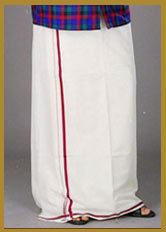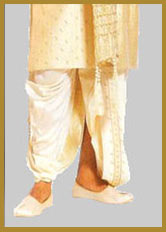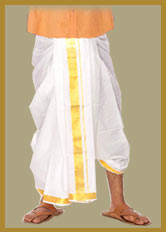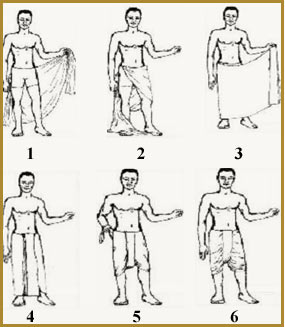Of them (also known as Quan Quan Ho Bac Ninh or Kinh Bac ...) are the folk songs of the northern plains, Vietnam; concentrated mainly in the Business North - Bac Ninh News and northern Jiang.
Called Quan Ho Bac Ninh does not mean Bac Ninh province is the main subject of the folk genre, North Kinh Bac Ninh or be interpreted as former Bac Ninh province, October 10, 1895, Bac Giang province, separated from the Northern Province Ninh. However, this type of folk mainly developed in the Bridge River, a natural border of the two provinces. According to the researchers, the name of this heritage can change over time, by creating cultural entities.
September 30, 2009, at the 4th session of the Intergovernmental Committee of the UNESCO Convention on Protection of intangible cultural heritage (from September 28 to October 2, 2009), they were recognized as representative of the intangible heritage of humanity after Hue royal court music, the space of Gong Culture in the Central Highlands and the same phase with Ca Tru.
Origins
Meaning of "Quan" is usually separated into two words and literal interpretation of the etymology of "objective" and "them". This leads to insights about Quan derived from "royal music", or associated with the integration of an important man going through the Kinh Bac was ecstatic by singing of joint his sister in the it and stopped steps to enjoy ("they"). However, this interpretation ignores the elements of their cultural space as living forms (the wards ceremony they made you two, her life just as you, can not be causally husband and wife), oratorio, how to organize and communicate, the way to use the word opposite in meaning and tone in cultural activities to meet folk.
Some opinion said that Quan derived from religious rituals bring people the traditional elements, not Quan derived from royal music, or view the progress of living forms culture "Quan game" rooted in religious ceremonies through the court then folk folk back.
Identified based on the semantic analysis of terms in the tunes and oratorio space that their view is "relationship" of a group of people who love them in Kinh Bac.
However there is no point of view accepted by most scholars. Their offices today is not only a way of singing (singing) between "linked him" (the male, men singing them) and "instant she" (female, woman singing them) but also the form of emotional exchange between mainland him, and he her audience. One of the forms represented a new song they sing style for consecutive consecutive meeting between him and her. Scenario may occur in the content of the lyrics have been prepared in advance or according to ability to improvise both sides of the theater.
Traditional quan
Traditional they only exist in 49 villages of their origin in Kinh Bac Quan is a form of traditional folk cultural institutions of Kinh Bac people, with strict regulations, requiring rigorous consecutive him, her instant understanding the criteria and follow the rules. This explains why Kinh Bac people enjoy "Quan game", not "Quan sing" traditional Quan main accompaniment and sing consecutive double between him and linked her to the spring festival The second period in the village. In their tradition, sometimes linked him to meet with her immediately she is known as sneeze, sing farming; them, the group linked him to meet with the group immediately she called to sing Happy, happy, singing church.
- "Playing them" traditional no audience, and performers who enjoy (enjoy the "love" your song). Many post offices they traditionally linked him, and he her "play their" favorite to this day as that, Love, You metallic times, A, plant rice.
They
They also called "Quan sing", is a form of performing (singing) their offices mainly on the stage or in the community Spring Festival, festivals, tourism, restaurants, ... In fact, they performed on any day of the year. The tape CD, DVD of them today are the form they were performing on stage, ie they are new. They always have an audience, who sang emotional exchange with the audience is no longer the love between you sing together. They are no longer located in the village space that has reached out in many places, with many listeners in countries around the world.
They have the form of their richer representation traditions, including solo, song, top song, dance song accompanied ... They modified the traditional post in two ways: unconscious and conscious. More or less, but the form of their song accompaniment is regarded as a modified no sense. Most all of them come under this type of arrangement. Modified sense that all documents have modified both the music and lyrics of their tradition. This type of arrangement is not much, for example, "do not" is adapted from tunes "Golden Bell doorman gate" (Xuan Tu arranger).
Sing them with my new favorite by many to mistakenly believe their traditional song "Bridge River water suspended poetry" written by Mai Khanh new words from traditional tunes "least sensitive cinnamon". They are preferred over traditional they do not have the space and the activities of their neck style is no longer part due to the activity "of their song" today often associated with responsible authorities for propagation, introduction, promoting them on a large scale.
Tunes
They are the most abundant type of folk on folk tunes in warehouses Vietnam. Each of them has its own tone. So far, there were at least 300 of them have been negative sign. The last of them was introduced only a part of the folk repertoire they were discovered. Tape storage thousands of their shares by the artist in the villages of their singing is still kept at the Department of Culture, Bac Giang and Bac Ninh.
The tunes of their neck: is that the way you Kim Loan, rice plants, Farewell you, Well la, La bargain, The Funeral, A, Up the mountain, down the river, the soul, A, Wind Moon bar, Four you ...
Apparel
Hats Sports straps and strips her tenderness of the joint
Of their costume includes dress costume then he and her immediately. During the festival they have both of their costume contest.
Soon he
Soon he wore a fifth body, neck upright, leaf, border evil, to bear up to the knees. Usually inside wearing a blouse or two, then two long. Particularly outside the regular black dress, materials, food, the, or for better-off people, the coat is made from the black, also covering garment dress twice with one out in wages or the period, once in blue silk thin flake, light green shoots, lemon yellow ... called a double coat.
Concerned of his white trousers, wide tube, garment type is lame foot up to the ankle, sewing materials polling well with pants, Cartridge, architecture elected, or silk Truoi color chicken fat. Small waist to tighten the waistband. Noise double his head wrapped or folded towel. Time ago, man more bun to should be the hair with a towel. After this part many haircuts, turn road house should switch to use a folded towel sold in the stores for this.
Along with pants, shirt, scarf, shoes, ... the instant he often more conical tip with the tip sheets usually pineapple or tip, chicken fat silk straps. Also see the instant he used the black box. Other accessories are hand towel, comb, the "luxury" in the ancient sense. Handkerchiefs of silk or with a large white cloth, fold and tuck in the donut, belt or pocket.
Soon she
Apparel instant she often referred to as "open three open seven shirt", consecutive means you can wear three interlocking dress (her grave) or seven interlocking dress (open seven). But in fact, the instant she often wears her grave. Basically costume includes components: the same as a regular brightly colored overalls made Truoi silk dyeing. Flaps are usually two types of is affectionately car (for middle) and neck bibs border (for young women). Outside bibs as a white blouse, gold, ivory, light colors, background firing. Also the same as the dress itself, the color scheme is similar in male costume but more colors.
Dress of the female body, buttoned, the different styles of Deathly tighten the two before that in ancient times girls usually worn during festivals, weddings or current artistic actors usually wear. Material for the best dressed first is the silk. Dresses out often fired as the old brown background color, non brown, black, amber while in often different colored dress: colored lotus, patio flower color, cerulean, hydro, color lemon yellow, yellow nuggets etc. Blouses worn can be replaced with white filter fabric, silk chicken fat.
Often dyed red overalls (old called petal coveralls), yellow letter (flowers), blue (natural sound), pink (lotus), aquarium (blue) etc. also sometimes encounter colored overalls white. Related sisters they do not seem to want his affection, his shirt completely covered should have caused a bit of bright color from the affection and the hem left body turn out. Award affection to let out the back of shirt and the bibs tied around the waist and wearing the front zone with bags and belts.
How's the old girl they often use oak material se (third-woven silk spinning), black, braided tassels at the ends of shell width, you can use thin pocket in the cover and tighten neat waist, slipped back tunic, tight get three body shirt, tied to zone to cover the belly. Belts are usually small bag with about 1/3 bag, used to tighten the waistband skirt waist. Similarly overalls, belts made of silk dyed bright colors like pomegranate flowers, peach flowers, fresh porch, colored aquarium. The waist and tied to the front zone to zone with shell smell overalls make these colorful flowers in front of the girl.
Immediately she wore skirts oak, silk skirts, sometimes with a double skirt dress in silk, fabric, color, food, the, the; outside in the silk dress. Black skirt. The dress is smart not to cut front dress, in strapless dress circle for trousers that are arranged so that the front drape tongues bottle down near the back of the foot, behind the superficial range incipient double sweet side heel.
Contact her slippers made of buffalo skin by manual methods; leather with a circle on the slippers to put on the second toe (next to the big toe) caused walking, not falling sandals. Nose bent sandals and slippers hairdresser to know yourself, of for hard nose sandals, such as a small shield, hiding the toes. Also, pants, belts, slippers, instant, she also scattered towel opened, athletic hats straps, the and strap beam waist area.
Quan conservation
Quan is a kind of extremely rich folk tunes. They were handed down in folklore from generation to generation through the oral method. This method is an important factor for them to become a kind of folk large number of songs with different melodies. However, this method has to do for all they are handed down in folk had to be changed a lot, even different than the original. Many ancient melodies were lost. Although this change make Quan development, but in the context of intrusion of Western culture is strong in Vietnam, their problems preserve the status quo in each stage of development is the employment level setting. Since the 70s of last century, the Department of Culture, Hebei conducted Quan collection. Thousands of posts Quan, including variants have been recorded in the villages of them, with the voices of hundreds of craftsmen (By now almost all gone). After screening and selection, musicians, researchers Hong Thao signed audio tracks, added some characters their own characteristic tone Quan. 300 Quan or post has been Music Publishing in a book. However, thousands of posts they have been recorded, by the particular artist (deceased) sang, must be extremely careful preservation. Department of Culture Bac Ninh (or Bac Giang) is responsible for keeping the tapes need to digitize the entire order to be able to keep a long way for future generations.


 The official national costume of Filipino men is the barong tagalog. The upper garment of the boy in the picture is a barong. It is worn over a Chinese collarless shirt called camisa de Chino. The boy is also wearing the traditional wide-brimmed hatsalakot, which is usually made of rattan or reeds.
The official national costume of Filipino men is the barong tagalog. The upper garment of the boy in the picture is a barong. It is worn over a Chinese collarless shirt called camisa de Chino. The boy is also wearing the traditional wide-brimmed hatsalakot, which is usually made of rattan or reeds. The official national costume of Filipina women is the baro at saya (= baro't saya). The baro is the top blouse. The saya is the skirt.
The official national costume of Filipina women is the baro at saya (= baro't saya). The baro is the top blouse. The saya is the skirt. They look like Ferdinand and Imelda Marcos! She was famous for wearing the terno with its butterfly sleeves.
They look like Ferdinand and Imelda Marcos! She was famous for wearing the terno with its butterfly sleeves. 










